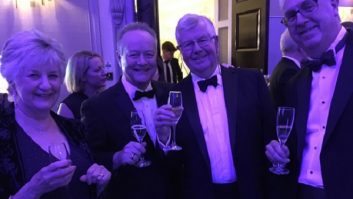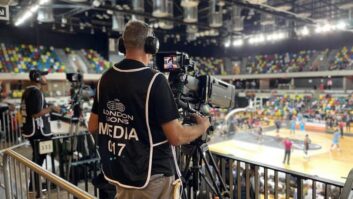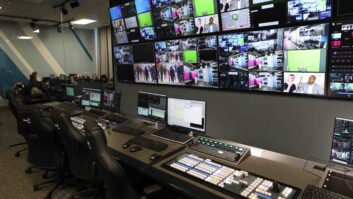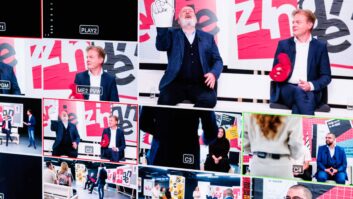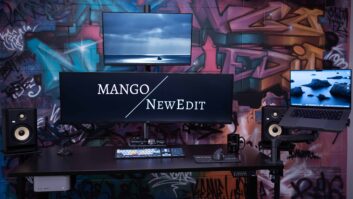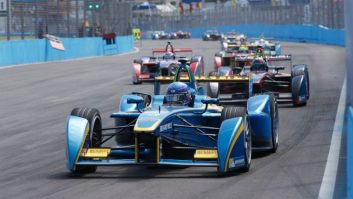
East Anglian-based Suitcase TV was involved with a remote production Proof-of-Concept (POC) at this year’s Euro 2016 tournament in France. This was an offline trial run in parallel with BBC Sport’s production using traditional broadcast architecture.
“The location end of the trial was a studio facility in Paris, while the production centre was at BBC Salford,” explains Ed Calverley (pictured), vice president, products, Suitcase TV. “There was also an additional control/monitoring location at UEFA’s International Broadcast Centre (IBC) facility in Paris.”
By running alongside the full broadcast operation, all feeds could be accessed by Suitcase TV. The studio sources included four Sony cameras, two outside sources that were selectable on a local router, and one graphics input. At Salford, there were two VT sources and one graphic unit.
He reports that Iphrame, Suitcase TV’s IP-based broadcast framework, was used for the project. This is a modular software solution that runs across a number of servers and client machines. “Iphrame makes use of our pioneering TimeLock functionality, which enables signals to be processed in different locations in a frame-accurate way to compensate for the latencies that are unavoidable with IP connectivity and remote operation.
The TimeLock concept enables an operator at a production centre to make accurate switching decisions that are passed back to software at a remote location, where uncompressed signals are buffered and switched/mixed on the appropriate frame after a fixed delay. This allows switching to take place at the remote location, which means that only one contribution link is required, as opposed to one per source.
Iphrame Surface provided the vision switcher user interface, where sources were displayed on a multi-viewer monitor, and on the hard panel for control. This switcher enables operation from any network-connected location, and generates an instant simulation of programme and preview outputs based on proxy feeds from all sources.
Full-resolution, uncompressed switching/mixing was a two-stage process, which used software in Paris as well as a second downstream mix process in Salford, comprising the Paris-feed and local VT/GFX sources mixed into final TX output.
“Low-resolution, compressed proxy feeds were generated for all remote sources, which were transferred over a layer two IP link,” reveals Calverley. “Seven source signals were transported between the server in Paris as uncompressed video and audio-over-IP, but were switched onsite to generate a single HD 1080i contribution feed that was compressed and sent over the same IP link as the source proxies.”
A variety of bitrates were tested during the trial, but the total bandwidth required for connection to the remote location was typically under 60mbps for normal operation. Connectivity to a remotely located operator was under 20mbps. The active traffic on the IP link for the trial totalled about 60mbps.
“The trial showed that it is not necessary to bring back all sources,” emphasises Calverley. “Switching can be done accurately at an event location, minimising the link required. However, simply remotely controlling a mix process is not enough as additional VT and graphics sources likely need to be used from a facility local to the operator, so a more complex two-stage mixer architecture is essential.”
He continues, “Iphrame allows for operations from multiple control surfaces that can be located anywhere a network connection is available. What’s more, control is not limited to a single operator. Keeping operational staff at a production centre creates greater efficiencies and new working practices enable broadcasters to generate more live content for less money, therefore providing audiences with the variety they crave.”
